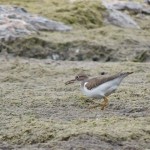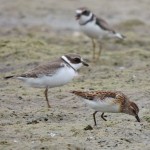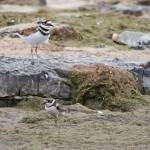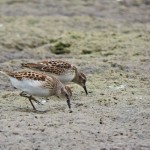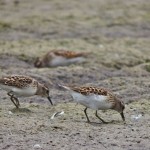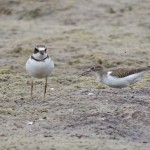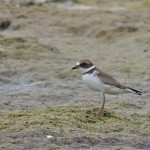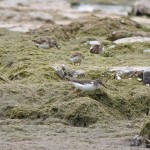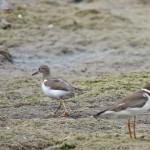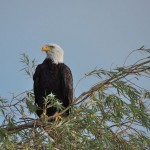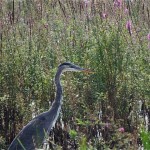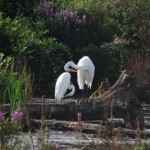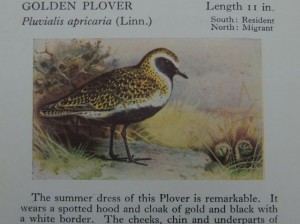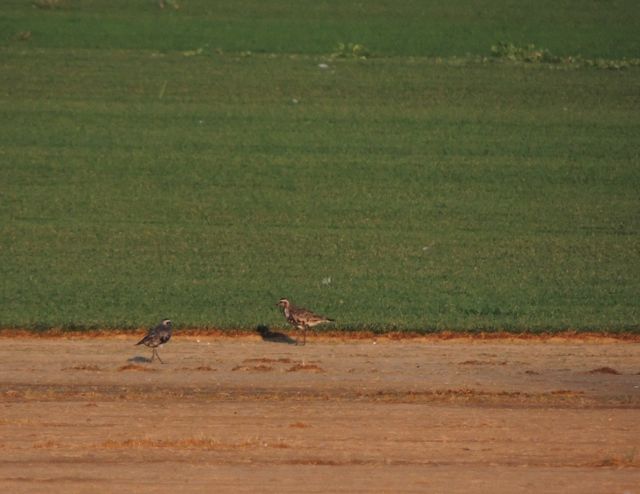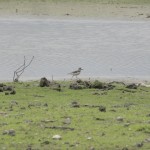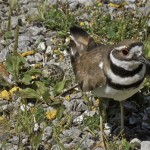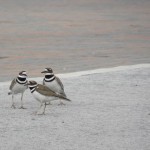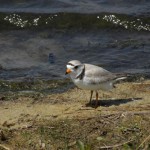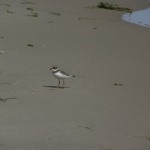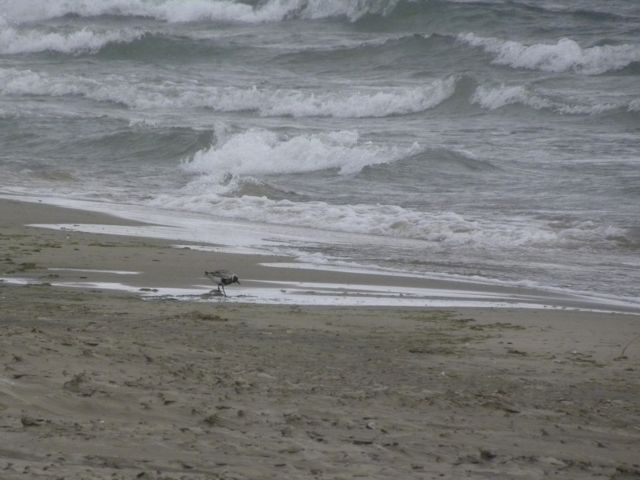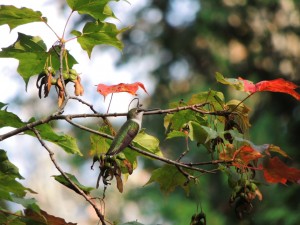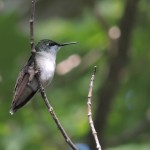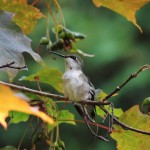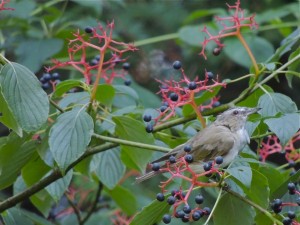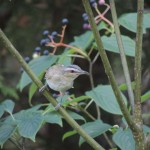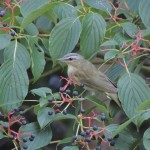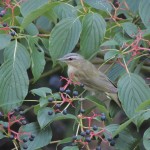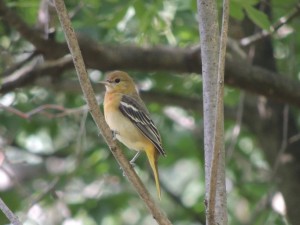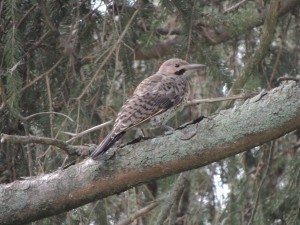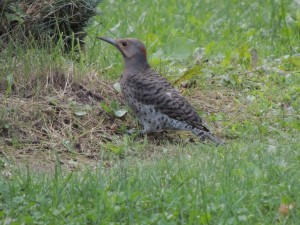30 August 2013. Lake Erie ON. Faced with a day with no seriously limiting commitments I opted to explore the north shore of Lake Erie to look for shorebirds and other birds of passage. I made my way along several miles of sometimes rocky shore which, had it not been for a decent lake breeze, might have been uncomfortably hot. For shorebirds now is the time to fly south and for the hordes that head straight down the middle of the continent sooner or later they find the Great Lakes, not blocking their way as they might seem to do for land birds, but actually providing an essential resting and refueling opportunity.
Much of the Lake Erie shore has, over decades past, been appropriated for summer cottages, which makes access for bird-watching tricky at times. Frankly I don’t think many of the cottagers were having a whole lot of fun this week because a recent on-shore storm had tossed a wide expanse of weed and algae onto the sands and rocky shelves leaving it to decay in deep festering mats like a long, wide cow-pat in both appearance and odour. But not all is lost because with decay comes flies and other invertebrate agents of decomposition and, while you and I might not relish them, the shorebirds gorge on this vast storehouse of protein, rich fuel for the next stage of the migration.
Ignoring the rankness of the situation I found two or three good places to sit quietly and let the birds come to me. I had plenty of time, at the best site an assorted flock scattered with my arrival, but betting that they’d return I sat quietly and in time they came back. First a couple of Semi-palmated Plovers flew in, then a small squad of Least Sandpipers hiked over whereupon they all mingled together. The plovers, being of a nervous tribe, were always on the look out for trouble, they’d pick, look up, then run a few paces, look up, then pick again. A Spotted Sandpiper flew low over the open water to join in the feast and it fed greedily using its somewhat longer bill to slide in to the morass as horizontally as possible; perhaps it knew something the others didn’t.
After a while a pair of Killdeer wandered over to see what was going on and I realized I had a rare opportunity in front of me to get pictures of multiple shorebird species and for a moment I framed all four species in one shot (although it wasn’t a keeper.) The Semi-palmated Plovers made my day, there’s a delicate, almost breakable, look about them; perhaps it’s the porcelain whiteness of their breasts that does it. This has surely been the week of the plover what with Black-bellied, American Golden and now Semi-palmated taking centre stage.
Somewhat later at a brief stop to look at a 4th-year Bald Eagle that I’d spotted sitting just offshore on a rock (and who promptly flew away as soon as I raised my binoculars) a couple of Pectoral Sandpipers had me baffled for a minute or two. I’d become so fixated on my earlier study of small birds that it took a while to put a name to these two handsome but strikingly larger sandpipers. The Pectoral Sandpipers’ give away is their bold dark bib that ends at an abrupt demarcation across their pectoral muscles.
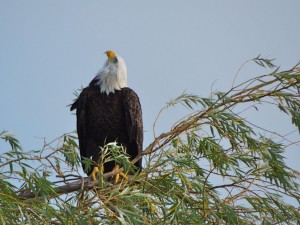 Although it was very much a sandpipers and plovers day I had many good sightings of engaging and dramatic birds. It made me think that if I’d taken a foreign visitor along with me with the promise of a good day’s birding, I would have deserved a hefty tip. Among these other successes were: three Bald Eagles including a spectacular adult atop a willow tree, several Great Egrets, Green Herons, Great Blue Herons, and a group of five Sandhill Cranes.
Although it was very much a sandpipers and plovers day I had many good sightings of engaging and dramatic birds. It made me think that if I’d taken a foreign visitor along with me with the promise of a good day’s birding, I would have deserved a hefty tip. Among these other successes were: three Bald Eagles including a spectacular adult atop a willow tree, several Great Egrets, Green Herons, Great Blue Herons, and a group of five Sandhill Cranes.
Most photos in this posting are viewable in the web site only, not if you’re reading this in an email
